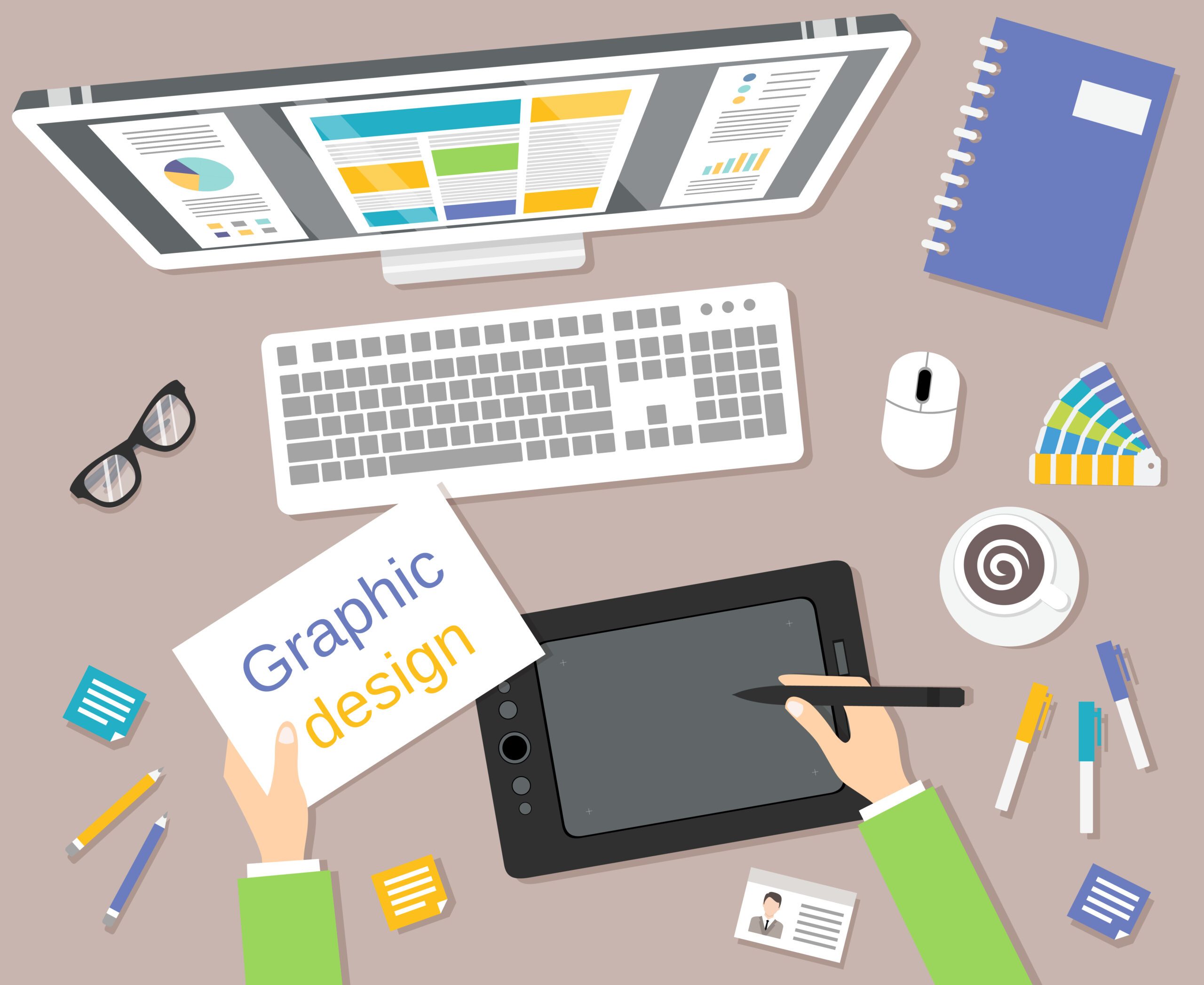The world of graphic design is a visually intriguing place. When done right it can convey your message and evoke emotions in ways that text alone falls short. If you are a beginner and want to know what graphic designing is and how to build a good career in this field. The easiest way to understand this is to consider a graphic designer as a visual communicator. They create various visual concepts such as illustrations, images, and videos to communicate ideas which inspire, inform or captivate customers.
The World of Graphic Design
At its root, graphic design involves understanding the basics of using design and colour theory to create visuals that effectively communicate key messages to your audience. This requires a detailed understanding of graphic elements which come into play when creating something that appeals to customers.
Professional graphic designers create their art based on six elements and seven principles of design which are elaborated below. That said, a good designer understands when to break the rules if needed. Creativity is the backbone of this industry, and when combined with problem-solving skills, the results can be awe-inspiring.
Elements of Design
There are six elements that are used across the board in all types of design. These are as follows:

1. Line: This is one of the most important elements of design, and determines where the focus of the viewer is drawn. There can be vertical, horizontal, diagonal, or curved lines which can be short, tall, and thick or thin.
2. Colour: Colour can also help determine the mood of the design, and how the consumer will feel when looking at the finished product. This involves understanding the colour wheel and the basis of colour theory.
3. Shape: This can include geometric shapes like classic squares and circles, or organic shapes like speech bubbles or amorphous blobs.
4. Texture: The texture is the way a surface would feel to the touch. This can be illustrated visually and is essential when adding depth to design.
5. Typography: The way text appears is another essential element of design. The style, size, and angle of the fonts used will influence the emotions a user will feel when exposed to the design.
6. Framing: This creates a hierarchy for the visuals, and guides the eyes to the most important information first.
Principles of Design
There are seven principles of design that are applied to the above elements that can enhance their effectiveness. These are as follows:
1. Emphasis: The most important information is highlighted first in the design.
2. Balance and Alignment: It is important to balance out and align the space within your design, so that all elements have weight.
3. Contrast: This creates some space and difference within the design between the various elements used.
4. Repetition: The brain is naturally attracted to patterns, and using repetition effectively is important in creating compelling designs.
5. Proportion: This is the visual size and weight of the elements used within the design.
6. Movement: Through the use of movement, the eye of the viewer is led from one element to the next within the composition.
7. White space: Sometimes referred to as blank space or negative space. Effective use of this principle erases clutter and helps communicate the brand message properly.
How to Become a Graphic Designer

Now that you know what graphic design is all about, you might be wondering how to become a graphic designer yourself. Professional graphic designers typically have a college Graphic Design diploma that reflects their understanding of communication design, as well as a portfolio to illustrate their work for potential employers and clients. They can work as art directors, graphic artists, web designers, creative designers, and much more. Job opportunities vary between traditional employment with one company, to freelance work within the industry. It can be a rewarding career full of numerous creative opportunities and unlimited room to grow.
Don’t restrict your talents to sketching and drawing in your spare time. Take your passion a step further by applying your creative mind to the study of graphic design theory. Master your skills with new tools and techniques along with knowledge of the latest graphic design software.
Final Thoughts
If the prospect of becoming a Graphic Designer sounds like the right career option for you, check out ABM College’s Graphic Design Diploma.
The course covers everything you will need for success, including hands-on experience with graphic design software such as Adobe Creative Suite (Photoshop, Illustrator, InDesign). At the end of the course, you even complete a 4-week practicum placement which helps you add work experience to your resume and add digital designs to your portfolio.
If you have any questions about this program then contact us.
You can also read more informational blogs here.
About The Author

Social Media Specialist & Content Writer, ABM College
Navneet Arora is an experienced social media strategist and SEO-focused content writer specializing in education, career development, and digital marketing. She holds a Master’s Degree in Journalism & Mass Communication and has over 8 years of hands-on experience crafting high-performing content for blogs, websites, and digital platforms.
At ABM College in Calgary, Alberta, Navneet develops engaging, research-driven articles that help students, professionals, and career changers navigate today’s job market. Her work has been published on leading Indian national news portals and recognized for driving measurable traffic growth.
Connect with Navneet on LinkedIn or read more of her work on the ABM College Blog.
